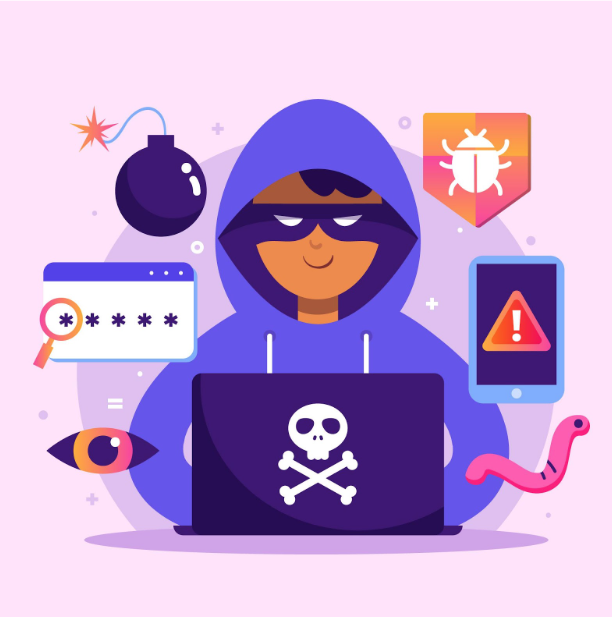If you’ve ever spent weeks or months crafting something original, you’ll know the sinking feeling when you see it pop up online with your name nowhere in sight. It’s like someone breaking into your house, walking off with your favourite guitar, and then playing it at a party as if it was theirs.
In India, this isn’t rare. It’s routine. From music to movies, software to e-learning courses—piracy is lurking in more corners than most realise. And while we like to think it’s just big studios or tech giants being hit, everyday creators, small businesses, and freelancers face the same threat.
That’s why anti piracy india isn’t just an industry buzzword anymore. It’s becoming a survival strategy.
Piracy in India—A Problem That’s Evolved
The image most people have of piracy is still some grainy movie on a torrent site or a bootleg DVD sold at a railway station. But modern piracy doesn’t look like that.
Today, it hides in plain sight. On social media pages. In Telegram groups. On streaming platforms you’d never suspect. It’s not just films and music—it’s stolen training courses, cracked versions of paid software, entire e-commerce product listings copied word-for-word.
The damage is more than just lost money:
- Reputation hits when fake versions underdeliver.
- Security risks—pirated software often drags malware along for the ride.
- Lost opportunities—future projects shelved due to budget gaps caused by theft.
That’s why anti piracy india services focus on early detection, not just after-the-fact takedowns.
How Modern Anti Piracy Works Behind the Scenes
In the old days, you waited for a tip-off—maybe a friend sent you a suspicious link—then you’d try to get it taken down. Now? The approach is completely flipped.
Here’s what’s happening under the hood today:
- Digital fingerprints are assigned to your content—unique IDs that make spotting copies instant.
- Automated crawlers scan marketplaces, forums, streaming sites, and social platforms non-stop.
- Real-time alerts pop up the moment an unauthorised copy appears.
- Rapid takedowns follow, often before the copy has time to spread.
- Brand protection tools flag fake accounts and misleading ads.
Think of it as a virtual security patrol that doesn’t get tired, take lunch breaks, or clock out.
Why the Anti Piracy Report Is Your Trump Card
Catching the problem is only half the story. Acting on it—that’s where the anti piracy report comes in.
This isn’t just a formality. It’s your proof. Your record. The evidence you’ll use to get platforms, authorities, and networks to act.
Depending on the case, your report might go to:
- Social platforms hosting the stolen content
- India’s cybercrime units
- International anti-piracy bodies
- Web hosts and ISPs linked to the offender
With experts like Bytescare, you can file a report in hours, not days. They know exactly how to phrase and package it so there’s no room for delay or excuses.
Why You Should Report Every Case—Yes, Even the Small Ones
It’s easy to think, “It’s just one stolen image. Not worth the trouble.” But here’s the thing—if you let it slide, it sends a message that you’re an easy target.
Every case reported does three things:
- Tells repeat offenders they won’t get away with it.
- Builds a history of evidence that strengthens your legal standing later.
- Protects your audience from fakes that could harm them.
Many of the biggest anti-piracy wins in India started with a handful of small reports.
A Balanced Strategy: Prevention + Action
Here’s the truth.You can’t erase piracy from the world. But you can make your work hard to steal, quick to detect, and costly for thieves to distribute.
A simple two-part plan works best:
- Prevention – Add watermarks, encrypt files, use license keys, and subscribe to an anti piracy india monitoring service.
- Action – File an anti piracy report the second you spot something off.
The idea isn’t perfection. It’s protection strong enough to make thieves think twice.
A Real Story From the Trenches
One Indian edtech company discovered its premium video courses being sold on a Telegram group for a fraction of their value. They didn’t waste time sending polite emails to the group admin.
Instead, they gathered evidence—screenshots, timestamps and filed an anti piracy report through Bytescare. Within 48 hours, the group vanished. Mirror sites hosting the content went dark soon after. Their revenue stream recovered in weeks, not months.
Why This Fight Is About More Than Just Money
Yes, piracy drains profits. But it also eats away at the creative spirit. If every time you release something, it’s snatched up and shared for free, motivation starts to crumble.
Protecting intellectual property isn’t just about protecting bank accounts—it’s about protecting the reason to create at all. It supports innovation, safeguards jobs, and ensures customers get the real deal.
That’s why filing that anti piracy report isn’t busywork. It’s part of keeping the ecosystem healthy.
The Final Word: Don’t Wait for a Big Loss to Act
Here’s the simplest way to think about it:
- Anti piracy india services are your shield—quietly watching over your work.
- Anti piracy report is your sword—ready to strike when someone crosses the line.
If you only have one, you’re fighting with half your strength.
The brands and creators who survive in today’s digital space? They don’t just react when something happens—they’re already set up for it. Their systems are in place, their teams know the drill, and they partner with experts who can move at speed.
Because in the end, it’s not just about files, code, or videos. It’s about protecting the nights you stayed up building them, the coffee-fuelled brainstorms, the failed drafts, the breakthroughs.
So next time you find your work somewhere it doesn’t belong, don’t shrug. Don’t rant on social media. Act. File the report. Shut it down. And keep creating, knowing you’ve got both the shield and the sword ready.

